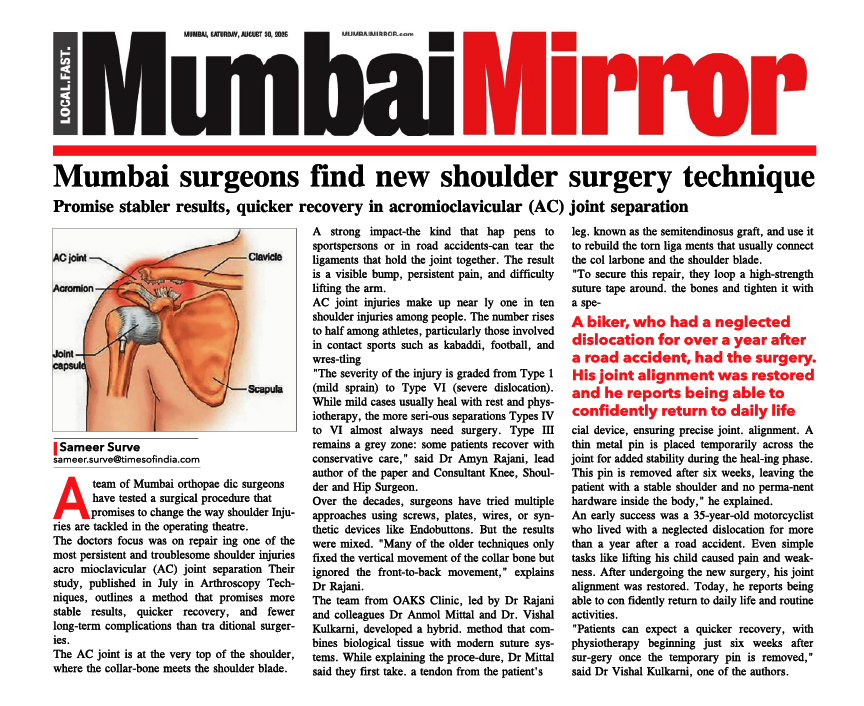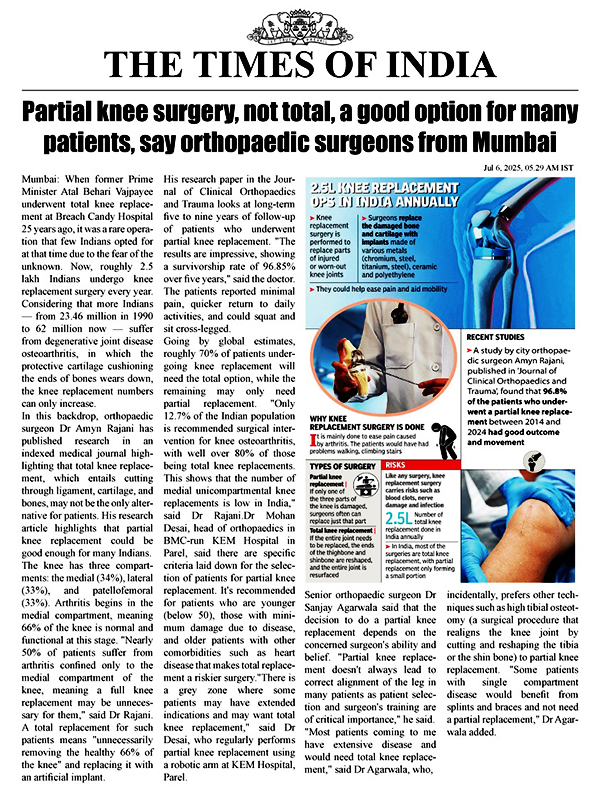The Anterior Cruciate Ligament (ACL) is one of the key stabilizing ligaments in the knee. It prevents excessive forward movement of the shinbone (tibia) relative to the thighbone (femur) and provides rotational stability. An ACL injury, particularly a tear, can significantly impact an athlete’s ability to perform at their highest level. Understanding which sports carry the highest ACL injury risk can help athletes take preventive measures and seek timely medical intervention, including ACL reconstruction surgery or arthroscopic knee surgery in Mumbai if needed.
Top Sports with High ACL Injury Risk
- Football (Soccer):
 Football is one of the most common sports associated with ACL injuries, especially in high-intensity professional leagues. The combination of sudden pivots, changes in direction, jumping, and tackling places immense strain on the ACL. Players are often at risk during cutting movements, like when a player quickly changes direction while chasing or avoiding the ball.
Football is one of the most common sports associated with ACL injuries, especially in high-intensity professional leagues. The combination of sudden pivots, changes in direction, jumping, and tackling places immense strain on the ACL. Players are often at risk during cutting movements, like when a player quickly changes direction while chasing or avoiding the ball. - Basketball:
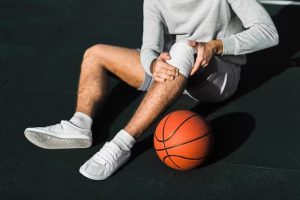 Basketball requires rapid sprints, jumps, pivots, and landings, making it a high-risk sport for ACL injuries. Jumping and landing incorrectly can lead to excessive strain on the knee, and the fast-paced nature of the sport increases the likelihood of sudden, unpredictable movements that can cause an ACL tear. ACL injuries in basketball often happen during jumps or when players are landing awkwardly.
Basketball requires rapid sprints, jumps, pivots, and landings, making it a high-risk sport for ACL injuries. Jumping and landing incorrectly can lead to excessive strain on the knee, and the fast-paced nature of the sport increases the likelihood of sudden, unpredictable movements that can cause an ACL tear. ACL injuries in basketball often happen during jumps or when players are landing awkwardly. - Skiing:
 Skiing, particularly alpine skiing, has a reputation for ACL injuries due to the rapid turns and sudden changes in direction that are common on steep slopes. When a skier falls or twists their knee while skiing, the forces exerted on the ACL are high, leading to a significant risk of tearing the ligament.
Skiing, particularly alpine skiing, has a reputation for ACL injuries due to the rapid turns and sudden changes in direction that are common on steep slopes. When a skier falls or twists their knee while skiing, the forces exerted on the ACL are high, leading to a significant risk of tearing the ligament. - Rugby:
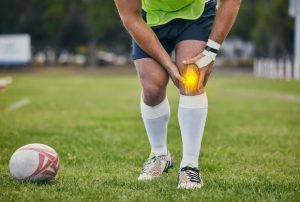 Rugby involves high-impact tackles, sudden stops, and direction changes that place the knee joint under intense stress. These movements, especially when players are caught in an awkward position or tackle with incorrect form, often result in ACL injuries. The physical nature of the sport increases the chances of ACL tears.
Rugby involves high-impact tackles, sudden stops, and direction changes that place the knee joint under intense stress. These movements, especially when players are caught in an awkward position or tackle with incorrect form, often result in ACL injuries. The physical nature of the sport increases the chances of ACL tears. - Tennis:
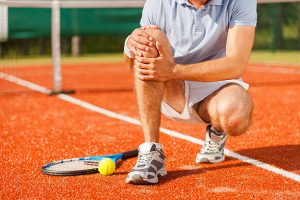 Tennis players, particularly those who play at competitive levels, are at significant risk of ACL injuries due to the quick lateral movements, pivots, and stops. When the foot is planted on the ground while the body twists or moves rapidly in another direction, it can lead to a tear or strain of the ACL.
Tennis players, particularly those who play at competitive levels, are at significant risk of ACL injuries due to the quick lateral movements, pivots, and stops. When the foot is planted on the ground while the body twists or moves rapidly in another direction, it can lead to a tear or strain of the ACL. - Volleyball:
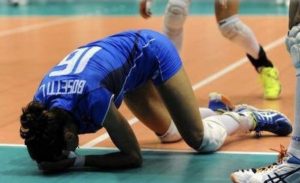 Volleyball players are at high risk for ACL injuries due to the repetitive jumping and sudden landings that the sport requires. The risk increases when a player lands with their knee in an unnatural position, especially after blocking a shot or making a quick pivot during play.
Volleyball players are at high risk for ACL injuries due to the repetitive jumping and sudden landings that the sport requires. The risk increases when a player lands with their knee in an unnatural position, especially after blocking a shot or making a quick pivot during play. - Handball:
 Like basketball, handball requires quick, explosive movements and changes in direction. The sport involves sudden stops and starts, jumps, and pivots, all of which place considerable stress on the knee joint, making ACL injuries a common occurrence.
Like basketball, handball requires quick, explosive movements and changes in direction. The sport involves sudden stops and starts, jumps, and pivots, all of which place considerable stress on the knee joint, making ACL injuries a common occurrence. - American Football:
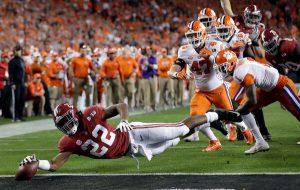 American football involves rapid directional changes, jumping, and hard tackles, all of which make ACL injuries more likely. The contact nature of the sport, with players often falling or being tackled into awkward positions, increases the risk of ACL tears.
American football involves rapid directional changes, jumping, and hard tackles, all of which make ACL injuries more likely. The contact nature of the sport, with players often falling or being tackled into awkward positions, increases the risk of ACL tears. - Hockey:
 Hockey players are exposed to ACL injuries due to the combination of fast skating, sudden stops, and changes in direction. The physicality of the sport, including checking and contact, adds to the likelihood of knee injuries, including ACL tears.
Hockey players are exposed to ACL injuries due to the combination of fast skating, sudden stops, and changes in direction. The physicality of the sport, including checking and contact, adds to the likelihood of knee injuries, including ACL tears. - Track and Field:
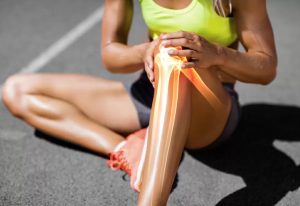 While not as contact-heavy as some of the other sports listed, track and field events like hurdling and sprinting can lead to ACL injuries. The explosive force required for sprinting and the high-impact landings from jumping events make athletes prone to ACL damage.
While not as contact-heavy as some of the other sports listed, track and field events like hurdling and sprinting can lead to ACL injuries. The explosive force required for sprinting and the high-impact landings from jumping events make athletes prone to ACL damage.
Preventing ACL Injuries
While certain sports carry a higher risk for ACL injuries, there are preventive measures that athletes can take to reduce the risk:
-
Proper warm-up and conditioning:
Strengthening the muscles around the knee, such as the quadriceps, hamstrings, and calf muscles, can provide better support and reduce strain on the ACL.
-
Techniques and training:
Athletes should be taught proper movement techniques, such as safe landing practices when jumping and cutting. Training to avoid incorrect twisting motions can help minimize injury risk.
-
Use of protective equipment:
Though not a substitute for proper conditioning, knee braces can offer additional support during high-risk activities.
-
Flexibility and balance exercises:
A flexible and well-balanced body can better absorb the impact of sudden movements and falls.
What to Do If You Suffer an ACL Injury
If you suspect an ACL injury, it’s crucial to seek medical attention promptly. An ACL injury often presents with symptoms such as:
- A popping sound or sensation during the injury.
- Severe pain, swelling, and instability in the knee.
- Difficulty in bearing weight on the affected leg.
For an accurate diagnosis and treatment, visiting a knee specialist in Mumbai is essential. Depending on the severity of the ACL injury, the treatment options may range from physical therapy to more advanced procedures like ACL reconstruction surgery in Mumbai or arthroscopic knee surgery in Mumbai.
ACL Treatment Options
-
Conservative treatment:
For minor ACL sprains, non-surgical treatment like rest, ice, compression, elevation (R.I.C.E.), and physical therapy may be sufficient. However, this is generally not effective for complete ACL tears.
-
ACL Reconstruction Surgery:
In cases of a complete ACL tear, ACL reconstruction surgery in Mumbai is often required. This procedure involves replacing the torn ACL with a graft, often taken from the patient’s own tissue (autograft) or from a donor (allograft). This surgery is typically performed using arthroscopic knee surgery techniques, allowing for smaller incisions and faster recovery times.
-
Rehabilitation:
Post-surgery rehabilitation is crucial to ensure the proper healing of the ACL and restoration of knee function. A comprehensive physical therapy program helps strengthen the knee and improve range of motion.
Dr. Amyn Rajani - Expert Care for ACL Injuries
If you’re suffering from an ACL injury, seeking treatment from an experienced knee surgeon in Mumbai is key to a full recovery. Dr. Amyn Rajani, an esteemed consultant specializing in knee, shoulder, and hip surgery, offers expert care for ACL injuries, including ACL reconstruction surgery in Mumbai. With years of experience in performing arthroscopic knee surgery in Mumbai, Dr. Rajani ensures that each patient receives personalized care and the best possible treatment options for their unique needs.
Dr. Rajani’s approach combines advanced surgical techniques with a focus on long-term recovery, ensuring that athletes can return to their sports with confidence.
FAQs
Q: How long does it take to recover from ACL reconstruction surgery?
A: Recovery typically takes 6 to 9 months, with physical therapy playing a crucial role in regaining strength and flexibility in the knee.
Q: Can I return to sports after ACL reconstruction?
A: Yes, many athletes return to their sport after ACL surgery, but it depends on the individual’s recovery progress and rehabilitation.
Q: How can I prevent an ACL injury in sports?
A: Preventive measures include proper warm-ups, strength training, and technique modifications to reduce stress on the knee.
Q: What is the success rate of ACL reconstruction surgery?
A: The success rate of ACL reconstruction surgery is high, with most patients regaining knee function and returning to their regular activities within 6-9 months.
For expert consultation on ACL injuries and surgery, contact Dr. Amyn Rajani, the top knee specialist in Mumbai.
For more information or to book a consultation with Dr. Amyn Rajani, visit OAKS clinic at Hughes Road, Mumbai or website www.dramynrajani.com or simply call on Clinic Number 91-88989 75355 / 91-22-23619137 to take the first step towards a pain-free future.




